Порядок рецензирования статей
1 Все научные статьи, поступившие в редакцию сетевого издания, подлежат обязательному рецензированию. Издание осуществляет рецензирование всех поступающих в редакцию материалов, соответствующих ее тематике, с целью их экспертной оценки. Все рецензенты являются признанными специалистами по тематике рецензируемых материалов. Рецензии хранятся в редакции издания в течение 5 лет.
2 Ответственный секретарь редакционного Совета (при необходимости совместно с членом редколлегии, отвечающим за тематический раздел сетевого издания) определяет соответствие статьи требованиям к оформлению и направляет статью на рецензирование или двум членам редакционной коллегии или двум внешним рецензентам – специалистам, докторам наук, имеющим наиболее близкую к теме статьи научную специализацию.
3 Рецензенты уведомляются о том, что присланные им рукописи являются собственностью авторов и содержат сведения, не подлежащие разглашению. Рецензирование проводится конфиденциально.
4 Сроки рецензирования определяются в каждом отдельном случае ответственным секретарем с учетом создания условий для максимально оперативной публикации статьи.
5 Рецензия должна объективно оценивать содержать всесторонний анализ ее научных и методических достоинств и недостатков. Рецензия составляется в свободной форме с обязательным освещением следующих положений:
- актуальность представленной статьи. Данный раздел включает краткое обоснование условий, которые вызвали необходимость постановки и решения задачи (проблемы);
- научная новизна направления исследования, рассматриваемого в статье. Здесь должно быть отражено краткое описание нового научного результата, полученного автором (что доказано, получено, установлено, определено, предложено и т.д. им);
- значимость постановки проблемы (задачи) или полученных результатов для дальнейшего развития теории и практики в рассматриваемой области знаний. В данном разделе должно быть показано, что конкретно получает развитие в исследуемой области знаний и как это может быть применено и внедрено на практике;
- адекватность и современность методов статистической обработки материалов;
- достаточность материала исследования;
- корректность обсуждения полученных результатов;
- соответствие выводов цели и задачам исследования;
- качество проработки литературных источников (список литературы);
- допустимость объема рукописи в целом и отдельных ее элементов (текста, таблиц, иллюстративного материала, библиографических ссылок);
- целесообразность помещения в статье таблиц, иллюстративного материала и их соответствие излагаемой теме;
- качество оформления статьи: стиль, терминология, формулировки.
В заключительной части рецензии должны содержаться обоснованные выводы о рукописи в целом и четкая рекомендация о целесообразности ее публикации в сетевом издании либо о необходимости ее доработки. В случае отрицательной оценки рукописи в целом (рекомендация о нецелесообразности публикации) рецензент должен обосновать свои выводы (Приложение).
6 В случае несоответствия рукописи одному или нескольким критериям рецензент указывает в рецензии на необходимость доработки статьи и дает рекомендации автору по улучшению рукописи (с указанием допущенных автором неточностей и ошибок). Редакция доводит до сведения автора результат рецензирования. Статьи, доработанные автором, повторно направляются на рецензирование тому же рецензенту, который делал критические замечания, или другому по усмотрению редакции. В случае конфликта рецензия предоставляется автору статьи без указания каких-либо сведений о рецензенте. При несогласии автора с замечаниями рецензента он может ходатайствовать о повторном рецензировании или отозвать статью, о чем делается запись в журнале регистрации.
7 По результатам рецензирования статья может быть:
а) отклонена
В случае отказа в публикации статьи редакция направляет автору мотивированный отказ в течение 10 дней.
Не допускаются к публикации:
- статьи, не оформленные в соответствии с требованиями редакции, авторы которых отказываются от технической доработки статей;
- статьи, авторы которых не выполняют конструктивные замечания рецензента или аргументировано не опровергают их.
б) отослана автору на доработку
Статья, принятая к публикации, но нуждающаяся в доработке, направляется авторам с замечаниями рецензента и редактора. Авторы должны внести все необходимые исправления в окончательный вариант рукописи и вернуть в редакцию исправленный текст, а также его идентичный электронный вариант вместе с первоначальным вариантом и сопроводительным письмом-ответом рецензенту. После доработки статья повторно рецензируется, и редакция принимает решение о возможности публикации. Статьи, отосланные авторам для исправления, должны быть возвращены в редакцию не позднее, чем через 7 календарных дней после получения. Возвращение статьи в более поздние сроки меняет дату публикации.
в) принята к публикации
Окончательное решение о принятии статьи автора и размещении ее в одном из выпусков сетевого издания принимается на заседании редакционной коллегии. Редакционная коллегия информирует о принятом решении автора по его запросу.
8 Редакторы не сообщают информацию, касающуюся рукописи (включая сведения о ее получении, содержании, процессе рецензирования, критических замечаниях рецензентов и окончательном решении), никому, кроме самих авторов и рецензентов.
9 Редакция и рецензенты не вступают в содержательное обсуждение статей с авторами.
10 Редакция строго придерживается норм и правил международной публикационной этики.
11 Мнение редакции и рецензентов может не совпадать с мнением автора и это не является основанием для отклонения статей.
12 Количество рецензируемых статей и сроки рецензирования конкретных статей определяются редакцией сетевого издания исходя из планов и необходимости формирования новых выпусков. Редакция не берет на себя обязательств по рецензированию абсолютно всех поступающих статей, а также по срокам их рецензирования.
